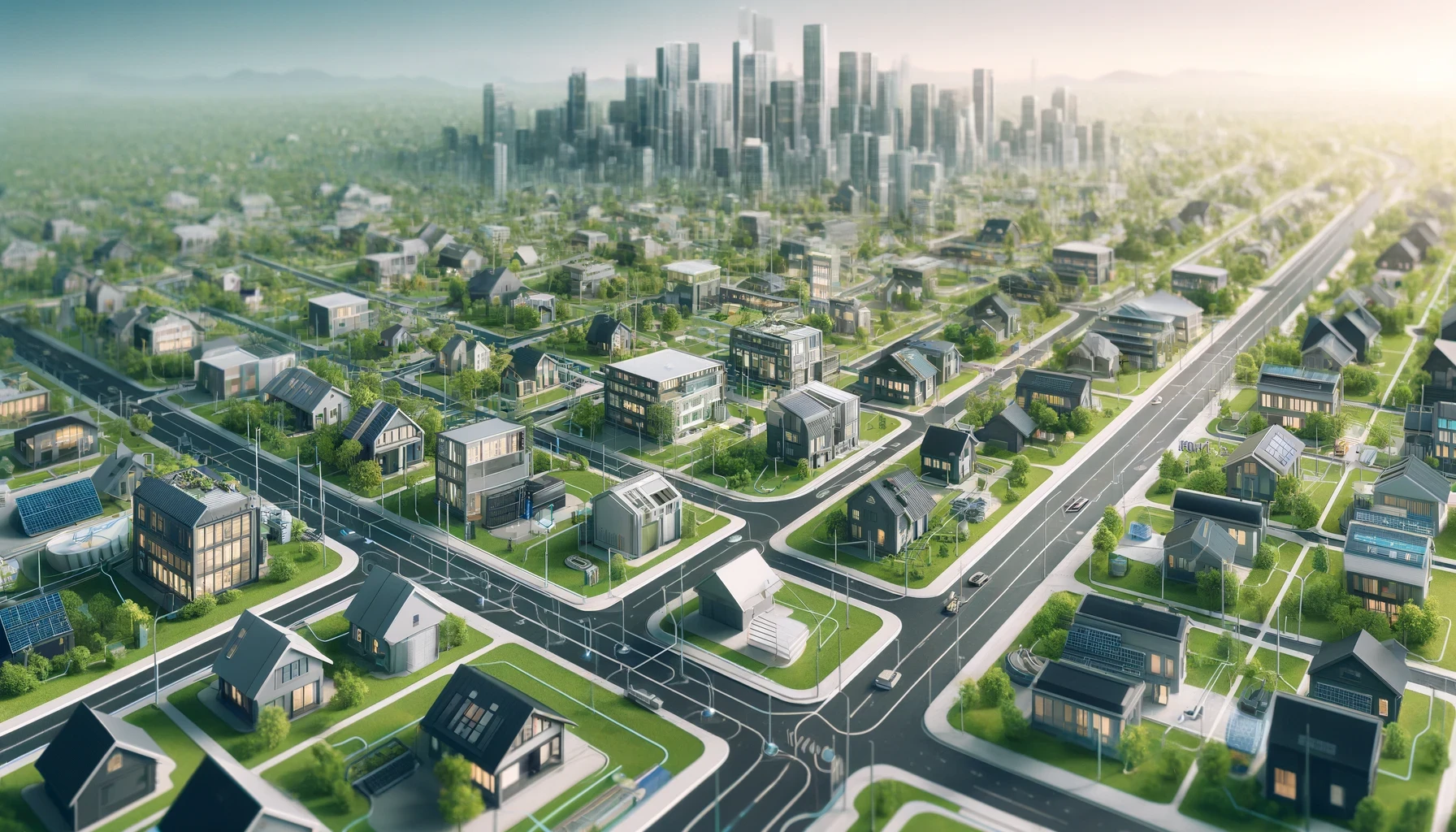

Aug 30, 2024
For more than a century, the common image of power plants has been enormous chimneys, oil rigs, coal mines and massive cooling towers scattered around our landscape. The power plant of the future won’t be a visible place at all, in fact, it will be digital.
Introducing the virtual power plant. A Virtual Power Plant is a dynamic network that connects diverse small energy devices, to create one large plant. Welcome to the future.
What are Virtual Power Plants?
A virtual power plant is a network of distributed energy sources and appliances, for example solar cells, batteries or charging stations for electric vehicles. All these different components are coordinated through a smart central hub.
In essence, the devices are working together in a cost-effective, energy efficient team.
How are they used today?
Virtual Power Plants, have been developed for quite some time. Today, they are mostly used in large industrial sites together with large solar plants and wind farms, to optimize their electricity usage. When there is an abundance of wind and sun, the industrial sites increase their electricity consumption, which in turn boosts production. When the wind falls and it is really cloudy for example, the industrial plants decrease their consumption and, consequently, production.
The principle of Virtual Power Plants on a residential level is a rather new concept. Let's dig a bit deeper.
What does the energy consumption of a household look like?
Imagine a household that has a home battery, solar panels and an electric vehicle. Each day, this household has a certain need for electricity. In the morning, you wake up to make coffee and some breakfast, using some energy. After this, you leave for work, leading to a drop in energy consumption. During this time, solar panels are most productive due to the most sunlight being available. Generating more than the house consumes. This excess in energy is partly stored in the battery and partly injected to the grid.
At around 6 pm you return from work, plug in your car and start cooking some food. The consumption of the household will go up massively.
This cycle happens each day and is more commonly known as the ‘duck curve’.
![[ADDCAPTION] A typica consumption pattern: a duck curve](https://framerusercontent.com/images/5cqwkk1wVQMo6zK8RbPPFFA7KeM.png)
A typical consumption pattern: a duck curve
The figure of the duck curve illustrates the phenomena. In the morning, electricity usage is high, as people wake up and start their day. By the afternoon, less energy is consumed, but there is a lot of energy being generated through solar panels. In the evening, people return home and start using energy again.
What are the problems with the duck curve?
If one household would follow this curve, there wouldn’t be a problem. But when everyone starts to exhibit this pattern, the grid could get overloaded.
Firstly, our grid isn’t made for the rapid increase and decrease of consumption, to accommodate for this, peak power plants have to be used. They often running on natural gas and are costly to operate and contribute significantly to pollution. Therefore, the usage of peak power plants should be avoided.
Secondly, when there is a lot of sun in the afternoon, there could be more production than needed. This excess of energy can’t be stored, leading to waste of energy.
Finally, there is a lot of price volatility, in the afternoon, the electricity prices are really low, while in the evening the prices are really high.
The ideal scenario would be if the curve is fully flat.
![[ADDCAPTION] The ideal consumption profile: completely flat](https://framerusercontent.com/images/kb4OU4lDXHXco4gycDSeSyGyEI.png)
The ideal consumption profile: completely flat
The figure above illustrates the potential for improvement of the energy use of the house. By smartly shifting the loads, significant improvements can be made with regard to cheaper and more efficient use of energy.
The power of a Virtual Power Plant
A central hub determines the best combined action of all the households and makes sure that the aggregated consumption of the households, is as flat as possible. For example, when you plug in your car, the car is not charged immediately but the charging is postponed, to a moment when the energy is the cheapest, greenest and in excess.
The hub can also act on the households, when there is an excess in energy. For instance, on a sunny day when there is a surplus of energy, it can simultaneously increase the of electricity consumption of multiple households. In this manner, it is possible to aggregate a lot of different households, to form one large power plant.
Instead of following the ‘duck curve’ the consumption of the households is flattened, leading to less strain on the grid and at the same time you pay less. A win-win!